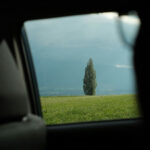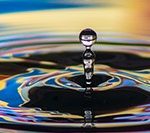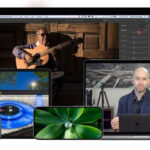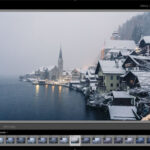Beginners often ask me whether or not they require a portrait lens for baby photography. The answer in relation to baby portraiture is an absolute yes.
With a standard lens you will need to get in very close to a baby. You can shoot from further back and crop digitally later, but, from a quality perspective, it’s best to have ‘more image to play with’. The fact is that the closer a stranger (you the photographer) gets to a baby the less chance there is of a good ‘quick shot’.

“the beginning…” captured by Adrian Adrianus (Click Image to Find Photographer)
There are exceptions to this, but take my word on this, it’s more often than not daunting for the baby and the parent if you try to get in too close with your standard lens. One exception would be if you need to work in a customer’s home in a confined space. Here you may have no choice but to use a standard lens.
If using 35mm or digital, any telephoto lens or zoom range between 70mm and 100mm will suffice. If using medium format anything between 100mm and 150 would be appropriate. Whichever format or lens, you should also invest in a lens hood to prevent flare.
Using a longer lens puts some distance between you and an anxious baby.
Flash meter
To get the best print quality for baby photography, accurate exposure is important. To achieve this you will need a flash meter.
Most flash meters are capable of taking both reflected readings and incident readings; in all conditions I have found incident readings to be most useful. I used a Minolta, however started with an inexpensive Shepherds flash meter which gave reliable results.

“Flying High” captured by Christopher Seufert (Click Image to Find Photographer)
Aside from the accuracy of exposure you will want a flash meter in order to ensure that you get the lighting ratios right too, if you are using more than one flash. This can be done by trial and error and by eye, but it’s quicker in the beginning to use the meter.
If you are just starting out and on a tight budget I’d recommend the Shepherd Polaris Digital Flash/Ambient Meter.
Tripod
For the majority of baby photography a tripod is essential. Using a tripod and cable release will free you to concentrate on maintaining a rapport with the parents and child. This is particularly true when photographing young babies with their parents; you can free yourself to throw a ball to mum or some other antics to raise a smile.
The tripod and a cable release will allow you to detach yourself from the camera. This will enable you to sustain the rapport that you have already established with the sitters and continue to chat with them in a relaxed and informal manner. It will also give you more opportunity to watch the baby in anticipation of the right moment to press the shutter.
It is difficult, (but still possible!) to do all of these things if you are crouched on the ground, camera in hand and one eye pressed against the viewfinder and the other closed. I’ve just said that a tripod is essential, and I believe it is. However…there are times in baby photography when it’s necessary to move the camera very quickly to get a shot that you would miss if the camera was fixed to the tripod!
I’ll clarify this for you. My own thinking and practice is that with older babies (6-7 months and over) who can hold their head up and be ‘propped’ against the back of a couch looking out toward you or placed in a fixed point say on a soft toy, then a tripod is essential.
Where the baby is capable of crawling off, then the tripod may not be appropriate, however that said, I’d advise that you make it difficult if not impossible for the baby to crawl away from your chosen spot.
However with newborn babies you will need a different approach. For example you can shoot them in their parent’s arms, or in their parent’s hands. You can even stand over the top of them as they lie on the floor, shooting directly down on top of them. In these cases I don’t use a tripod.
Do you want to learn more about how I do it? I have written a comprehensive guide on baby photography.
About the Author:
Bobby is a photographer and author for PhotoBiz4u dot com (currently an issue with the site). He has been commissioned to shoot thousands of events, including weddings and portraits.
Like This Article?
Don't Miss The Next One!
Join over 100,000 photographers of all experience levels who receive our free photography tips and articles to stay current:






You have shared good information about the equipments for the beginners who want to learn photography. Thanks for sharing this useful information with us.
Bobby, great ideas on baby photography. I would like to hear more about how you get little subjects to smile for the camera. Captured spontaneous and bubbly expressions are priceless. See what you think about our little aid to help make it fun to smile for the camera and get them to “watch the birdie.” Another simple tip I read was to place a tissue paper over the baby’s face and pull up quickly in a “peek a boo” style motion. Have fun!